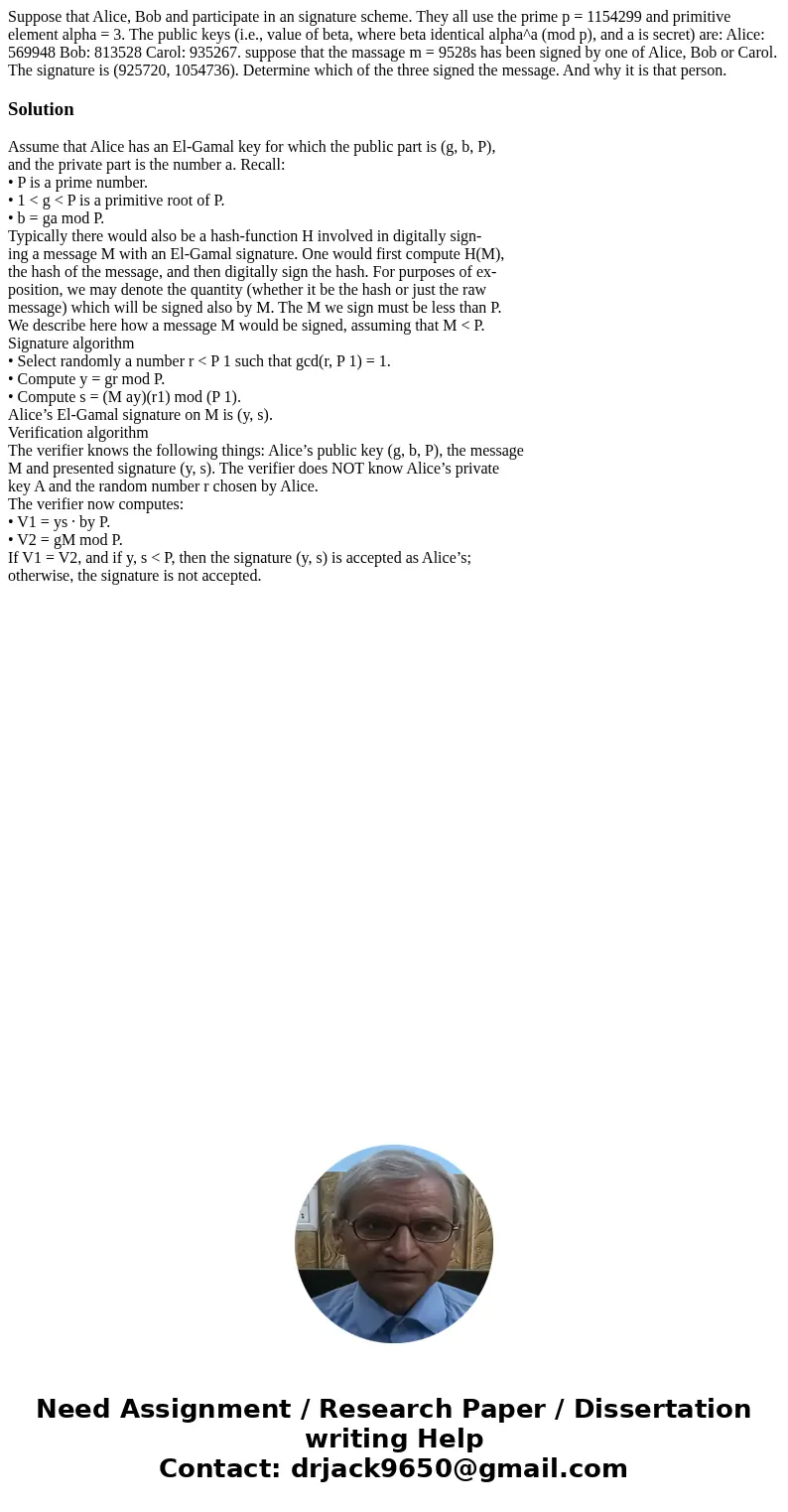Suppose that Alice Bob and participate in an signature schem
Solution
Assume that Alice has an El-Gamal key for which the public part is (g, b, P),
and the private part is the number a. Recall:
• P is a prime number.
• 1 < g < P is a primitive root of P.
• b = ga mod P.
Typically there would also be a hash-function H involved in digitally sign-
ing a message M with an El-Gamal signature. One would first compute H(M),
the hash of the message, and then digitally sign the hash. For purposes of ex-
position, we may denote the quantity (whether it be the hash or just the raw
message) which will be signed also by M. The M we sign must be less than P.
We describe here how a message M would be signed, assuming that M < P.
Signature algorithm
• Select randomly a number r < P 1 such that gcd(r, P 1) = 1.
• Compute y = gr mod P.
• Compute s = (M ay)(r1) mod (P 1).
Alice’s El-Gamal signature on M is (y, s).
Verification algorithm
The verifier knows the following things: Alice’s public key (g, b, P), the message
M and presented signature (y, s). The verifier does NOT know Alice’s private
key A and the random number r chosen by Alice.
The verifier now computes:
• V1 = ys · by P.
• V2 = gM mod P.
If V1 = V2, and if y, s < P, then the signature (y, s) is accepted as Alice’s;
otherwise, the signature is not accepted.

 Homework Sourse
Homework Sourse